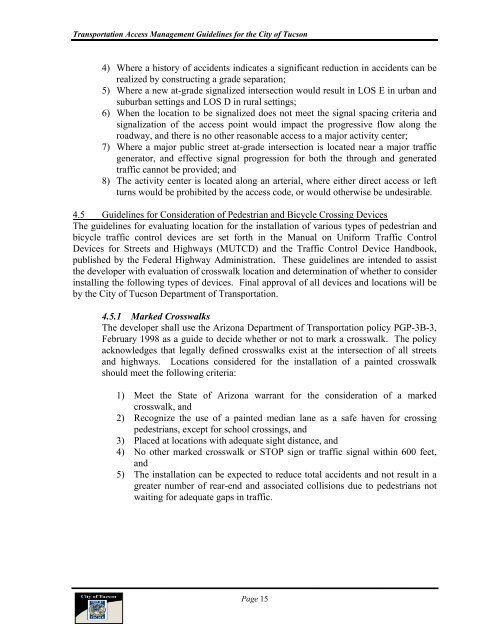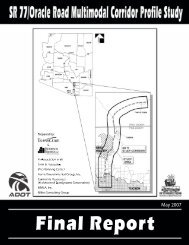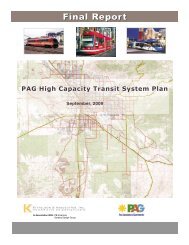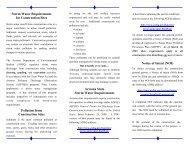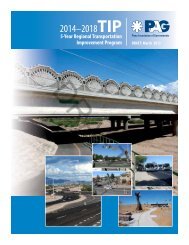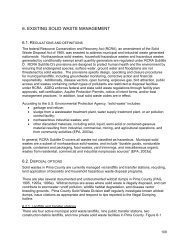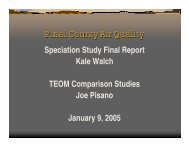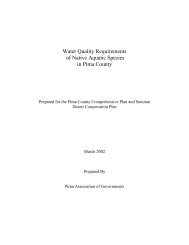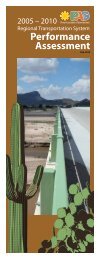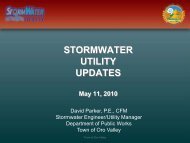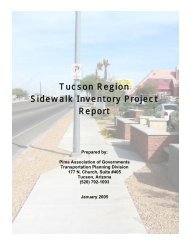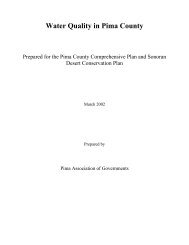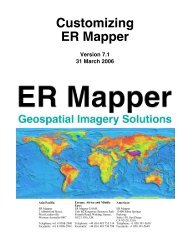Transportation Access Management Guidelines for ... - City of Tucson
Transportation Access Management Guidelines for ... - City of Tucson
Transportation Access Management Guidelines for ... - City of Tucson
You also want an ePaper? Increase the reach of your titles
YUMPU automatically turns print PDFs into web optimized ePapers that Google loves.
<strong>Transportation</strong> <strong>Access</strong> <strong>Management</strong> <strong>Guidelines</strong> <strong>for</strong> the <strong>City</strong> <strong>of</strong> <strong>Tucson</strong><br />
4) Where a history <strong>of</strong> accidents indicates a significant reduction in accidents can be<br />
realized by constructing a grade separation;<br />
5) Where a new at-grade signalized intersection would result in LOS E in urban and<br />
suburban settings and LOS D in rural settings;<br />
6) When the location to be signalized does not meet the signal spacing criteria and<br />
signalization <strong>of</strong> the access point would impact the progressive flow along the<br />
roadway, and there is no other reasonable access to a major activity center;<br />
7) Where a major public street at-grade intersection is located near a major traffic<br />
generator, and effective signal progression <strong>for</strong> both the through and generated<br />
traffic cannot be provided; and<br />
8) The activity center is located along an arterial, where either direct access or left<br />
turns would be prohibited by the access code, or would otherwise be undesirable.<br />
4.5 <strong>Guidelines</strong> <strong>for</strong> Consideration <strong>of</strong> Pedestrian and Bicycle Crossing Devices<br />
The guidelines <strong>for</strong> evaluating location <strong>for</strong> the installation <strong>of</strong> various types <strong>of</strong> pedestrian and<br />
bicycle traffic control devices are set <strong>for</strong>th in the Manual on Uni<strong>for</strong>m Traffic Control<br />
Devices <strong>for</strong> Streets and Highways (MUTCD) and the Traffic Control Device Handbook,<br />
published by the Federal Highway Administration. These guidelines are intended to assist<br />
the developer with evaluation <strong>of</strong> crosswalk location and determination <strong>of</strong> whether to consider<br />
installing the following types <strong>of</strong> devices. Final approval <strong>of</strong> all devices and locations will be<br />
by the <strong>City</strong> <strong>of</strong> <strong>Tucson</strong> Department <strong>of</strong> <strong>Transportation</strong>.<br />
4.5.1 Marked Crosswalks<br />
The developer shall use the Arizona Department <strong>of</strong> <strong>Transportation</strong> policy PGP-3B-3,<br />
February 1998 as a guide to decide whether or not to mark a crosswalk. The policy<br />
acknowledges that legally defined crosswalks exist at the intersection <strong>of</strong> all streets<br />
and highways. Locations considered <strong>for</strong> the installation <strong>of</strong> a painted crosswalk<br />
should meet the following criteria:<br />
1) Meet the State <strong>of</strong> Arizona warrant <strong>for</strong> the consideration <strong>of</strong> a marked<br />
crosswalk, and<br />
2) Recognize the use <strong>of</strong> a painted median lane as a safe haven <strong>for</strong> crossing<br />
pedestrians, except <strong>for</strong> school crossings, and<br />
3) Placed at locations with adequate sight distance, and<br />
4) No other marked crosswalk or STOP sign or traffic signal within 600 feet,<br />
and<br />
5) The installation can be expected to reduce total accidents and not result in a<br />
greater number <strong>of</strong> rear-end and associated collisions due to pedestrians not<br />
waiting <strong>for</strong> adequate gaps in traffic.<br />
Page 15


